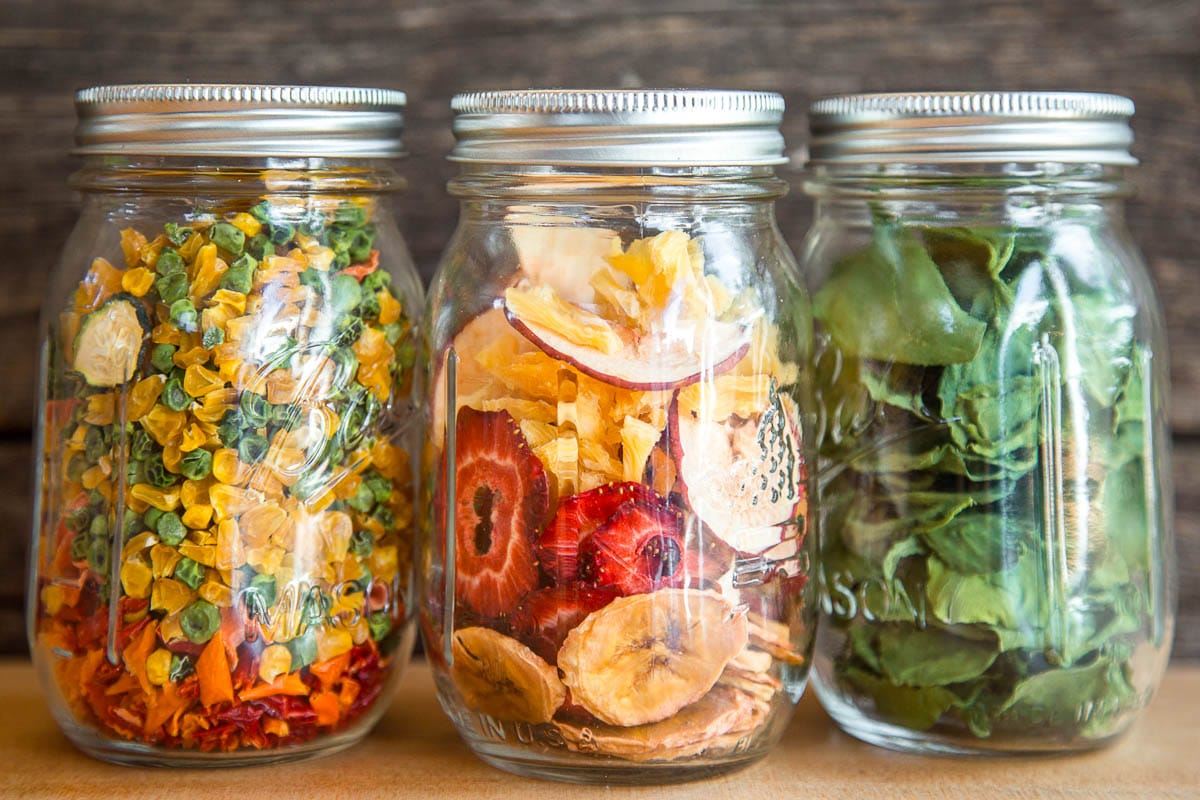

Articles
How To Store Dehydrated Food For Long Term
Modified: February 23, 2024
Learn how to store dehydrated food for long-term preservation with these helpful articles. Discover tips and techniques to keep your food fresh and ready to use.
(Many of the links in this article redirect to a specific reviewed product. Your purchase of these products through affiliate links helps to generate commission for Storables.com, at no extra cost. Learn more)
Introduction
Welcome to the world of dehydrated food storage! If you’re looking for a way to preserve your food for the long term, dehydrating is a fantastic option. This process removes moisture from the food, making it less susceptible to spoilage and bacteria growth. It is a popular method for extending the shelf life of various types of food, including fruits, vegetables, meats, and herbs.
Storing dehydrated food offers a multitude of benefits. Firstly, it allows you to stock up on seasonal produce or take advantage of sales without worrying about spoilage. Secondly, it is an excellent way to have nutritious, homemade food available during emergencies or when fresh ingredients are not readily available. Additionally, storing dehydrated food is cost-effective compared to purchasing commercially processed, pre-packaged alternatives.
Before diving into the dehydrated food storage process, there are a few factors to consider. Firstly, you need to ensure that the food is properly dehydrated. This means that all moisture has been removed from the food, leaving it crisp and dry. Otherwise, a higher moisture content can lead to mold growth and spoilage. Secondly, you should consider the storage conditions, such as temperature and humidity levels, as they can affect the shelf life of the dehydrated food.
When it comes to storing dehydrated food, there are various containers and methods to choose from. The most common options include storing in pantry or cupboard, freezing, using Mylar bags, or storing in mason jars. Each method has its advantages and considerations, based on factors like convenience, space availability, and the length of storage desired.
In this article, we will explore the different containers and methods for storing dehydrated food. We will also provide tips and best practices for long-term storage. So, let’s dive in and discover how to preserve your dehydrated food for the long term!
Key Takeaways:
- Storing dehydrated food extends shelf life, retains nutrients, and offers convenience, making it a cost-effective and flavorful option for long-term food preservation.
- Proper preparation, packaging, and storage conditions are crucial for maintaining the quality and longevity of dehydrated food, ensuring a reliable source of nutrition and delicious meals.
Read more: How To Store Dehydrated Fruit Long Term
Benefits of Storing Dehydrated Food
Storing dehydrated food offers a plethora of benefits that make it a popular choice among individuals looking to preserve their food for the long term. Here are some key advantages:
- Extended Shelf Life: Dehydrating food significantly extends its shelf life. By removing the moisture from the food, you eliminate the conditions necessary for spoilage, such as bacterial growth. Properly dehydrated and stored food can last for months or even years without losing its flavor, nutritional value, or quality.
- Nutritional Value: Dehydrated food retains most of its nutritional value. Unlike other preservation methods, such as canning or freezing, dehydrating food preserves essential vitamins, minerals, and enzymes. This means that even after months of storage, your dehydrated food will still be packed with essential nutrients.
- Convenience: Dehydrated food is incredibly convenient, especially for individuals with busy lifestyles or limited access to fresh ingredients. Once dehydrated, the food becomes lightweight and compact, making it easy to store, transport, and use whenever needed. Whether you’re camping, backpacking, or simply looking for a quick and nutritious meal, dehydrated food is a convenient option.
- Cost-Effective: Storing dehydrated food is a cost-effective solution. Instead of purchasing pre-packaged, commercially processed food, you can dehydrate your own food at a fraction of the cost. Additionally, dehydrating food allows you to take advantage of bulk or sale prices, reducing your overall food expenditure.
- Taste and Flavor: Dehydrating food intensifies its natural flavors. By removing the water content, the flavors become more concentrated, resulting in a rich and robust taste. Dehydrated fruits become naturally sweet and chewy, while vegetables become crisp and retain their natural essence. This makes dehydrated food enjoyable and versatile for various recipes and snacking.
- Emergency Preparedness: Storing dehydrated food is an excellent method of emergency preparedness. Whether you’re facing a natural disaster, power outage, or financial difficulties, having a stockpile of dehydrated food ensures that you have a reliable source of nutrition. It provides peace of mind, knowing that you’ll have sustenance during challenging times.
With these numerous benefits, it’s no wonder that more and more people are opting to dehydrate and store their food for the long term. Not only does dehydrated food have an extended shelf life, but it also offers convenience, cost-effectiveness, and retains its nutritional value and flavors. So, whether you’re an outdoor enthusiast, a busy professional, or someone looking to be prepared for emergencies, storing dehydrated food is a wise choice.
Factors to Consider Before Storing Dehydrated Food
Before you start storing your dehydrated food, there are a few important factors to consider. These factors can significantly impact the shelf life and quality of your stored food. Here are some key considerations:
- Dehydration Level: Ensure that your food is properly dehydrated before storing it. Proper dehydration involves removing all moisture from the food, making it crisp and dry. Any remaining moisture can lead to mold, spoilage, and a shorter shelf life. Invest in a good quality food dehydrator or use an oven to ensure thorough dehydration.
- Storage Conditions: The storage conditions, such as temperature and humidity levels, play a crucial role in the shelf life of dehydrated food. Aim to store your dehydrated food in a cool, dry, and dark place. Also, avoid storing it near heat sources, direct sunlight, or areas with high humidity. These conditions can cause moisture absorption, leading to spoilage and loss of flavor.
- Quality of Food: The quality of the food you dehydrate will affect its storage life. Choose fresh and ripe produce for dehydrating. Avoid using damaged, bruised, or overripe fruits and vegetables. Quality ingredients will yield better-tasting and longer-lasting dehydrated food.
- Proper Packaging: The packaging you choose for storing dehydrated food is crucial. It should be airtight and prevent any moisture from entering. Use high-quality storage containers, such as Mylar bags or mason jars with tight lids. Vacuum sealing can also be a good option to eliminate air and enhance the shelf life of dehydrated food.
- Labeling and Rotation: Properly label your stored dehydrated food containers with the name and date of packaging. This ensures that you use the oldest food first and maintain a rotation system. Regularly check the stored food for any signs of spoilage, such as mold or off smells. Discard any food that shows signs of deterioration.
- Storage Space and Organization: Consider the amount of storage space you have available and implement an organized system. Properly arranging your dehydrated food containers will save space and make it easier to access when needed. Keep an inventory of your stored food to avoid wastage and to know when to replenish your stock.
By considering these factors before storing your dehydrated food, you can ensure optimal shelf life and maintain the quality of your stored food. Dehydrated food, when stored correctly, can be a valuable asset, providing you with access to nutritious and flavorful food for an extended period.
Containers for Storing Dehydrated Food
Choosing the right containers for storing your dehydrated food is crucial to maintain its quality and extend its shelf life. Here are some popular options:
- Mylar Bags: Mylar bags are a popular choice for long-term storage of dehydrated food. These bags are made of a durable, food-safe material that provides an excellent barrier against moisture, light, and oxygen. To use Mylar bags, simply place your dehydrated food inside, remove any excess air, and seal the bag using a heat sealer. This airtight packaging helps to preserve the quality and freshness of the food.
- Mason Jars: Mason jars, with their airtight lids, are a classic option for storing dehydrated food. They are reusable, sturdy, and transparent, allowing you to easily see the contents. To use mason jars, ensure that the lids are clean and in good condition. Fill the jar with the dehydrated food, leaving some headspace, and seal it tightly. Store the jars in a cool and dry place away from direct sunlight.
- Vacuum-Sealed Bags: Vacuum-sealed bags are an effective option for removing air and preserving the quality of dehydrated food. These bags can be sealed using a vacuum-sealing machine, which removes the air and creates a tight seal. Vacuum sealing helps to prevent oxidation and moisture absorption, which can lead to spoilage. Ensure that the bags are thick and durable to avoid punctures or leaks.
- Food-grade Plastic Containers: Food-grade plastic containers with tight-fitting lids are another option for storing dehydrated food. Choose containers made from high-quality, BPA-free plastic to ensure the safety of your stored food. These containers are lightweight, transparent, and stackable, making them convenient for organizing your pantry. Look for containers with airtight seals to prevent moisture and air from entering.
- Aluminum Foil: Aluminum foil is a simple and readily available option for short-term storage of dehydrated food. Wrap the food tightly in aluminum foil, ensuring there are no openings or gaps. Aluminum foil provides a protective barrier against light, moisture, and air. However, it is not as durable or airtight as other storage options, so it is best suited for short-term storage or when other options are not available.
Regardless of the container you choose, it’s essential to ensure that it is clean, dry, and airtight. This will help to maintain the quality and freshness of your dehydrated food. Remember to label your containers with the name and date of packaging for easy organization and rotation of your stocked food.
Consider the length of storage and convenience when selecting your containers. Mylar bags and mason jars are ideal for long-term storage, while vacuum-sealed bags and plastic containers are suitable for shorter periods. Ultimately, the choice of container depends on your preferences, available space, and the specific requirements of the dehydrated food you are storing.
Now that you are familiar with the different container options, you can choose the one that best suits your needs and start storing your dehydrated food for long-term enjoyment.
Preparation and Packaging of Dehydrated Food
Proper preparation and packaging of dehydrated food are essential to ensure its quality, longevity, and safety. Follow these steps to prepare and package your dehydrated food:
- Choose Fresh and Ripe Produce: Start by selecting fresh and ripe fruits, vegetables, meats, or herbs for dehydration. High-quality ingredients yield better-tasting and longer-lasting dehydrated food. Avoid using overripe or damaged produce.
- Wash and Prepare: Thoroughly wash and prepare the food before dehydrating it. Remove any peels, cores, stems, or seeds as needed. For fruits prone to browning, such as apples or pears, you can dip them in lemon water to prevent oxidation.
- Slice Uniformly: Slice the food into uniform pieces to ensure even drying. This allows for consistent dehydration and prevents some pieces from being under or over-dried. Use a sharp knife or a mandoline slicer to achieve uniform thickness.
- Pre-Treatment (Optional): Some foods benefit from pre-treatment before dehydrating. For example, blanching vegetables in boiling water for a short time and then immediately submerging them in ice water can help to preserve their color and texture. You can also marinate meat or season fruits with spices before dehydrating for added flavor.
- Dehydrate the Food: Place the prepared food on the dehydrator trays or baking sheets and dehydrate according to the specific instructions for each type of food. Dehydrate at the recommended temperature and duration to ensure thorough drying.
- Cool and Condition: Once the food is dehydrated, remove it from the dehydrator or oven and let it cool completely. Then, condition the dried food by placing it in breathable containers, such as paper bags or cloth bags, for about a week. This helps to equalize the moisture content within the dried food and ensures proper storage.
- Package for Storage: After conditioning, it’s time to package the dehydrated food for long-term storage. Depending on the chosen storage container (like Mylar bags, mason jars, or vacuum-sealed bags), carefully place the dehydrated food inside, ensuring there are no air pockets. For Mylar bags, remove excess air before sealing, and for mason jars or vacuum-sealed bags, follow the manufacturer’s instructions to create an airtight seal.
- Label and Store: Properly label each package with the name of the food and the date of packaging. This helps you keep track of your stored food and ensure proper rotation. Store the packaged dehydrated food in a cool, dry, and dark place, away from direct sunlight, heat sources, and high humidity levels.
By following these steps, you can prepare and package your dehydrated food properly, ensuring its quality and longevity. Properly dried and packaged food can last for months or even years, providing you with a convenient and nutritious food source whenever you need it. Remember to regularly check your stored food for any signs of spoilage, and if in doubt, discard the food to ensure your safety.
Now that you know how to prepare and package your dehydrated food, you can confidently start preserving your favorite fruits, vegetables, meats, and herbs for long-term storage.
Read more: How To Store Dehydrated Potatoes Long Term
Storing Dehydrated Food in Pantry or Cupboard
Storing dehydrated food in your pantry or cupboard is a convenient option, especially if you have limited freezer space or prefer easy access to your preserved food. Here’s how you can store your dehydrated food in the pantry or cupboard:
- Choose the Right Containers: Use airtight containers such as glass jars, food-grade plastic containers, or Mylar bags to store your dehydrated food. Make sure the containers have tight-fitting lids to prevent air and moisture from entering.
- Ensure a Cool and Dark Environment: Find a cool and dark spot in your pantry or cupboard for storage. Temperature and light exposure can affect the quality and shelf life of your dehydrated food. Avoid placing the containers near heat sources, direct sunlight, or areas with high humidity.
- Organize Your Storage: Arrange your containers in an organized manner. Keep similar foods together and label each container with the name of the food and the date of packaging. This helps with easy identification and rotation of your stock.
- Regularly Check for Signs of Spoilage: Periodically check your stored dehydrated food for signs of spoilage, such as mold growth, off smells, or insect infestation. If you notice any of these signs, discard the affected food immediately to prevent contamination of other items.
- Monitor Temperature and Humidity: Keep an eye on the temperature and humidity levels in your pantry or cupboard. If the environment becomes too warm or humid, it can accelerate spoilage. Consider using a hygrometer or a temperature and humidity monitor to ensure the conditions are within the optimal range.
- Create a Rotation System: To maintain freshness and ensure that you use the oldest food first, implement a rotation system. When you replenish your stock, place the newly dehydrated food at the back of the storage area, pushing the older packages to the front. This way, you avoid having food sitting for too long and ensure that you consume your dehydrated food before it reaches its expiration date.
Storing dehydrated food in your pantry or cupboard allows for easy access when you need it. It’s a great option for keeping a variety of dehydrated fruits, vegetables, and herbs on hand for snacking or adding to recipes. Just make sure to follow proper storage practices and regularly check for signs of spoilage to maintain the quality and safety of your stored food.
With these tips in mind, you can confidently store your dehydrated food in your pantry or cupboard, creating a convenient and accessible pantry of nutritious and flavorful options for your meals and snacks.
Store dehydrated food in airtight containers with oxygen absorbers to prevent moisture and oxygen from spoiling the food. Keep in a cool, dark place for long-term storage.
Storing Dehydrated Food in the Freezer
If you have extra freezer space, storing dehydrated food in the freezer can be a great option for long-term preservation. Freezing helps to maintain the quality and freshness of your dehydrated food for an extended period. Here’s how you can store your dehydrated food in the freezer:
- Properly Package the Food: Place your dehydrated food in airtight containers, such as freezer-safe bags or plastic containers. Ensure that the containers are specifically designed for freezer storage to prevent freezer burn and maintain the quality of the food.
- Remove Excess Air: Before sealing the containers, make sure to remove any excess air to minimize the risk of freezer burn. You can use a straw to suck out the air from freezer bags or press down on the food to eliminate air pockets in plastic containers.
- Label and Date the Containers: Clearly label each container with the name of the food and the date of packaging. This makes it easy to identify the contents and ensures proper rotation to use the oldest food first.
- Choose the Right Freezer Storage: Place your dehydrated food containers in the coldest part of the freezer, such as the back or bottom shelf. Avoid placing them near the freezer door, as the temperature fluctuates more in that area, which can affect the quality of the food.
- Monitor Temperature: Keep an eye on the temperature of your freezer. It is recommended to set the freezer temperature at or below 0°F (-18°C) to maintain optimal frozen food storage conditions. Use a freezer thermometer to ensure that the temperature remains within the desired range.
- Check for Freezer Burn: Periodically check your frozen dehydrated food for any signs of freezer burn. Freezer burn occurs when the food is exposed to air and moisture, resulting in dry, discolored, and unpalatable spots. If you notice any signs of freezer burn, it’s best to discard the affected food.
- Use within a Reasonable Timeframe: While frozen dehydrated food can last for a long time, it’s still recommended to use it within a reasonable timeframe to ensure optimal taste and quality. Aim to consume the frozen food within 6 to 12 months for the best results.
Storing dehydrated food in the freezer is an excellent option if you have the available space and want to extend the shelf life of your preserved food. Frozen dehydrated food maintains its nutritional value, flavor, and texture, allowing you to enjoy it for months to come.
By following these guidelines for freezer storage, you can preserve the quality of your dehydrated food and have a convenient stash of nutritious and flavorful ingredients ready for your recipes or emergency situations. Just remember to label and rotate your stock and monitor the freezer temperature regularly for optimal storage conditions.
Now that you know how to store dehydrated food in the freezer, you can confidently maximize the shelf life of your preserved food and enjoy it whenever you need it.
Storing Dehydrated Food in Mylar Bags
When it comes to long-term storage of dehydrated food, Mylar bags are an excellent choice. These durable, food-safe bags provide an effective barrier against moisture, light, and oxygen, helping to preserve the quality and shelf life of your dehydrated food. Here’s how you can store your dehydrated food in Mylar bags:
- Select High-Quality Mylar Bags: Choose Mylar bags specifically designed for food storage. Look for bags that are thick, puncture-resistant, and have a metalized inner layer. These features ensure that the bags provide optimal protection for your dehydrated food.
- Prep and Fill the Bags: Before filling the Mylar bags, ensure that they are clean and dry. Cut the bags to the desired size, leaving enough extra length for sealing. Fill the bags with your dehydrated food, leaving some headspace at the top to allow for proper sealing.
- Remove Excess Air: To minimize the amount of air inside the bags, use an oxygen absorber. Oxygen absorbers help to remove any remaining oxygen, which can lead to spoilage and reduce the shelf life of the food. Place the appropriate-sized oxygen absorber into the bag before sealing it.
- Seal the Bags: To create an airtight seal, use a heat sealer to seal the Mylar bags. Slide the open end of the bag through the heat sealer, leaving about an inch of space from the top to allow for a better seal. Apply heat evenly along the edge to melt and seal the bag. Repeat this process for all filled Mylar bags.
- Label and Date the Bags: After sealing, label each bag with the name of the food and the date of packaging. This information helps with proper organization and rotation, ensuring that you use the oldest food first.
- Store in a Suitable Location: Place the filled and sealed Mylar bags in a cool, dry, and dark place for storage. Make sure to store them away from direct sunlight, heat sources, and areas with high humidity levels. A pantry, cellar, or a dedicated storage room are ideal options.
- Regularly Check for Intact Seals: Periodically check your stored Mylar bags for any signs of damage or compromised seals. If you notice any punctures, tears, or broken seals, transfer the food to a new Mylar bag and reseal it for optimal storage.
Storing dehydrated food in Mylar bags provides an excellent long-term storage solution. The bags effectively protect your dehydrated food from moisture, light, and oxygen, ensuring its quality and extending its shelf life. Just make sure to properly seal and label the bags and store them in suitable conditions to maintain the freshness of your food.
By following these steps and guidelines, you can confidently store your dehydrated food in Mylar bags, knowing that your preserved food is protected and ready to use whenever you need it.
Storing Dehydrated Food in Mason Jars
Mason jars are a classic and reliable option for storing dehydrated food. These versatile glass jars with airtight lids provide an effective and visually appealing storage solution. Here’s how you can store your dehydrated food in mason jars:
- Choose the Right Size Jars: Select mason jars with appropriate sizes for storing your dehydrated food. Consider the quantity of food you wish to store and choose jars that provide enough space while minimizing air exposure.
- Clean and Dry the Jars: Ensure the jars are clean, dry, and in good condition before use. Wash the jars and lids with hot, soapy water and rinse thoroughly. You can sanitize the jars by placing them in boiling water for a few minutes or by running them through a dishwasher cycle.
- Fill the Jars: Place your dehydrated food inside the mason jars, leaving some headspace at the top. This headspace allows for expansion that might occur due to temperature changes and ensures a better seal when closing the jars.
- Absorb Moisture with Desiccant: To further protect the quality of your dehydrated food, you may choose to include a desiccant packet in each jar. Desiccant packets help to absorb any residual moisture, preventing spoilage and maintaining the overall quality of the food.
- Seal the Jars: Once the jars are filled, place the lids on top and firmly screw them in place. Ensure that the lids are properly sealed to create an airtight barrier. A vacuum seal can also be achieved by using a vacuum sealer attachment specifically designed for mason jars.
- Label and Date the Jars: Properly label each jar with the name of the food and the date of packaging. This information helps with organization and rotation of your stored food, ensuring that you use the oldest food first.
- Store in a Suitable Location: Find a cool, dry, and dark spot in your pantry or cupboard to store the mason jars. Keep them away from direct sunlight, heat sources, and areas with high humidity levels, as these factors can compromise the quality and shelf life of the food.
- Monitor for Seal Integrity: Regularly check the seal of the mason jars to ensure it remains intact. If you notice any signs of a broken seal, such as a popped lid or a loose ring, remove the food, discard the jar, and transfer the food to a new jar with a proper seal.
Storing dehydrated food in mason jars provides a practical and aesthetically pleasing solution. The transparent glass allows for easy visibility of the food, and the airtight seal helps to maintain its quality and prolong its shelf life.
By following these steps and maintaining the integrity of the jar seals, you can confidently store your dehydrated food in mason jars, knowing that your preserved food is protected and ready to be used whenever you need it.
Read more: How To Store Lard Long Term
Tips for Long-Term Storage of Dehydrated Food
When it comes to storing dehydrated food for the long term, following some essential tips can help maintain its quality and maximize its shelf life. Consider these tips to ensure optimal storage conditions:
- Properly Dehydrate the Food: Ensure that your food is thoroughly dehydrated before storing it. Proper dehydration removes all moisture, minimizing the risk of spoilage. Use a reliable food dehydrator or oven and follow the recommended temperature and drying time for each type of food.
- Choose the Right Storage Containers: Invest in high-quality, airtight containers specifically designed for long-term food storage. Mylar bags, mason jars, food-grade plastic containers, and vacuum-sealed bags are popular options. These containers keep out moisture, light, and air, preserving the quality and freshness of the dehydrated food.
- Use Oxygen Absorbers: Consider using oxygen absorbers in your storage containers. Oxygen absorbers help remove oxygen, which can lead to oxidative deterioration and spoilage of the food. Place the appropriate-sized oxygen absorber inside the container before sealing it to extend the shelf life of the dehydrated food.
- Store in a Cool and Dark Place: Find a cool and dark storage location for your dehydrated food. Temperature and light can degrade the quality of the food over time. Avoid storing the food near heat sources or in areas exposed to direct sunlight. A cool pantry, cellar, or dedicated storage room are ideal options.
- Monitor Humidity Levels: High humidity can accelerate spoilage and lead to mold growth. Keep an eye on the humidity levels in the storage area and aim for a dry environment. Consider using moisture absorbers or a dehumidifier if necessary, especially in humid climates.
- Rotate and Check for Spoilage: Implement a rotation system to use the oldest dehydrated food first. Regularly check your stored food for any signs of spoilage, such as mold, off smells, or insect infestation. Discard any food that shows signs of deterioration to prevent contamination of other items.
- Keep an Inventory: Create an inventory list of your stored dehydrated food. This helps you keep track of what you have on hand and when you need to replenish your stock. It also assists in meal planning and ensures that you rotate your stored food effectively.
- Consider Freezer Storage: If you have extra freezer space, freezing your dehydrated food can extend its shelf life. Follow proper packaging techniques for freezing and maintain a consistent temperature of 0°F (-18°C) or below to preserve the quality of the food for an extended period.
- Label and Date: Properly label each container with the name of the food and the date of packaging. This information helps with organization and ensures that you use the oldest food first. Use waterproof and smudge-proof labels for durability.
- Keep a Backup Plan: While dehydrated food has an extended shelf life, it’s always wise to have additional backup options for long-term food storage. Consider diversifying your food preservation methods by also including canned goods, freeze-dried food, or commercially packaged long-lasting items.
By following these tips, you can maximize the shelf life of your dehydrated food and ensure that it remains of high quality for extended periods. Properly stored dehydrated food can provide a reliable source of nutrition and delicious meals, whether for outdoor adventures, emergencies, or everyday use.
Remember to regularly check your stored food for any signs of spoilage and maintain a well-organized storage system. With these measures in place, you can confidently store and enjoy your dehydrated food for the long term.
Conclusion
Storing dehydrated food for the long term is an excellent way to preserve the quality and nutrition of your favorite fruits, vegetables, meats, and herbs. Whether you choose to store your dehydrated food in pantry or cupboard, in the freezer, in Mylar bags, or in mason jars, proper storage practices are essential to maintain its freshness and extend its shelf life.
By ensuring thorough dehydration, using the right storage containers, removing excess air, and protecting against moisture, light, and oxygen, you can successfully store your dehydrated food for months or even years. Consider the factors that can affect the longevity of your preserved food, such as temperature, humidity, and proper packaging techniques.
Take advantage of the benefits that come with storing dehydrated food. Not only does it offer extended shelf life and cost-effectiveness, but it also provides convenience, nutritional value, and emergency preparedness. With dehydrated food at your disposal, you can enjoy nutritious and flavorful meals, even in times of limited fresh produce availability or during emergencies.
Remember to regularly check your stored dehydrated food for any signs of spoilage and practice proper rotation to use the oldest food first. Keep track of inventory, label and date your containers, and maintain a well-organized storage system for easy access and management.
Whether you’re a seasoned food preservation enthusiast or new to the world of dehydrated food storage, these guidelines and tips will help you make the most of your preserved food. Enjoy the convenience, nutrition, and culinary possibilities that come with storing dehydrated food for the long term!
Frequently Asked Questions about How To Store Dehydrated Food For Long Term
Was this page helpful?
At Storables.com, we guarantee accurate and reliable information. Our content, validated by Expert Board Contributors, is crafted following stringent Editorial Policies. We're committed to providing you with well-researched, expert-backed insights for all your informational needs.



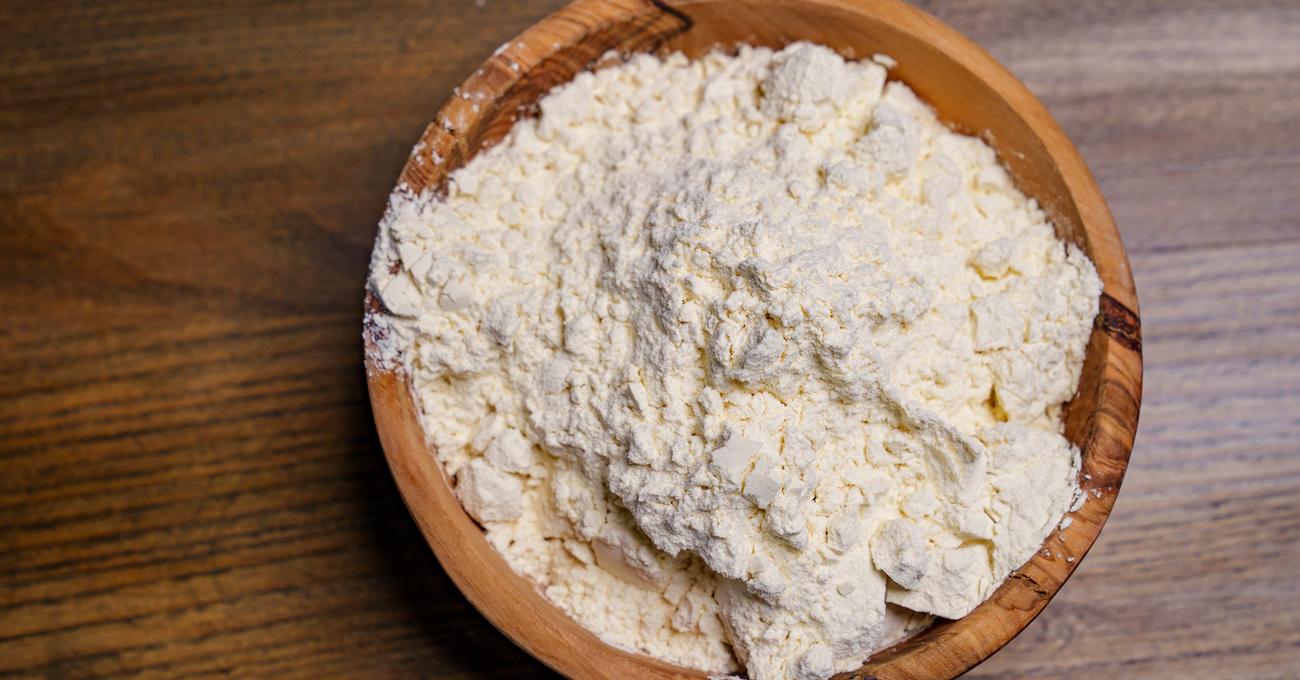
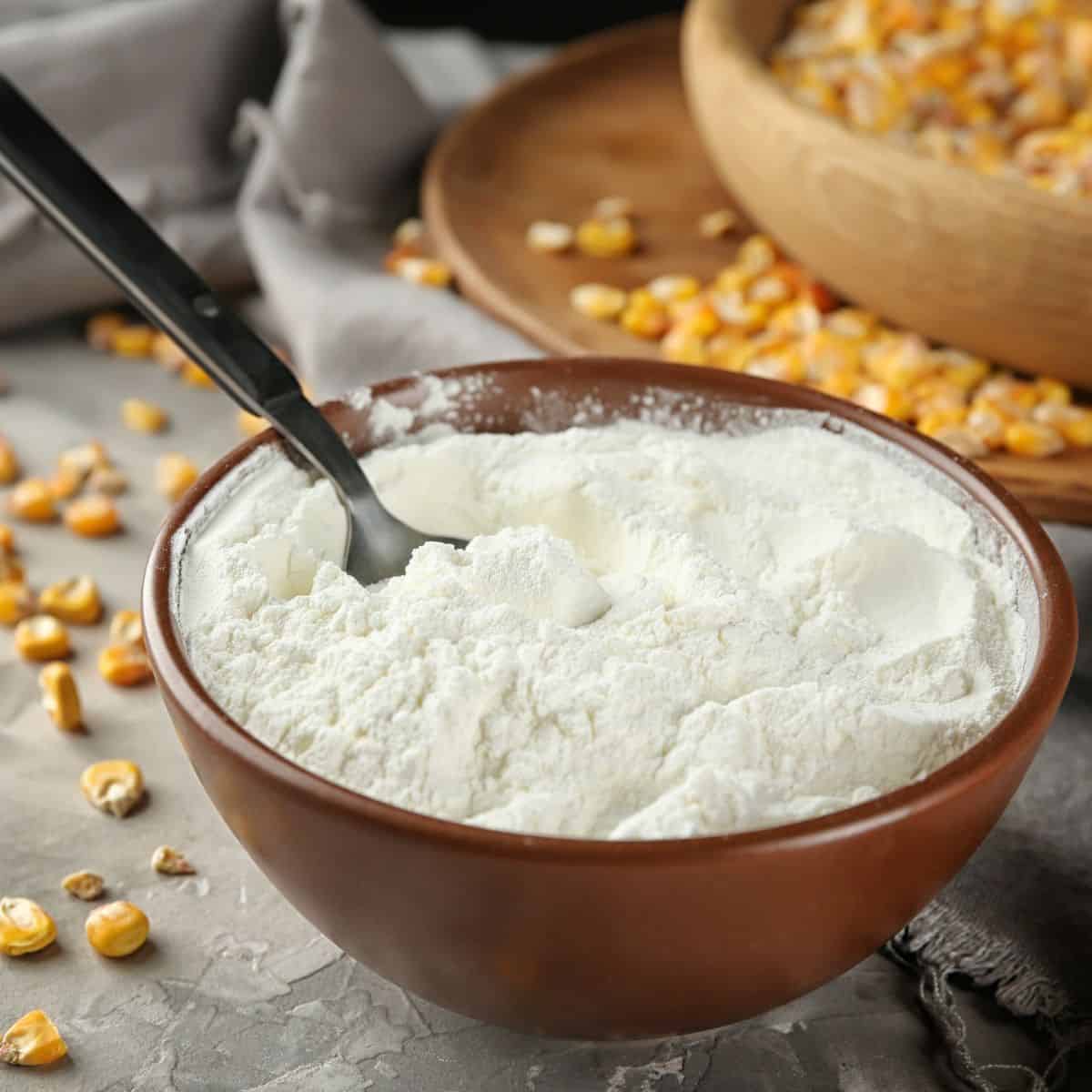
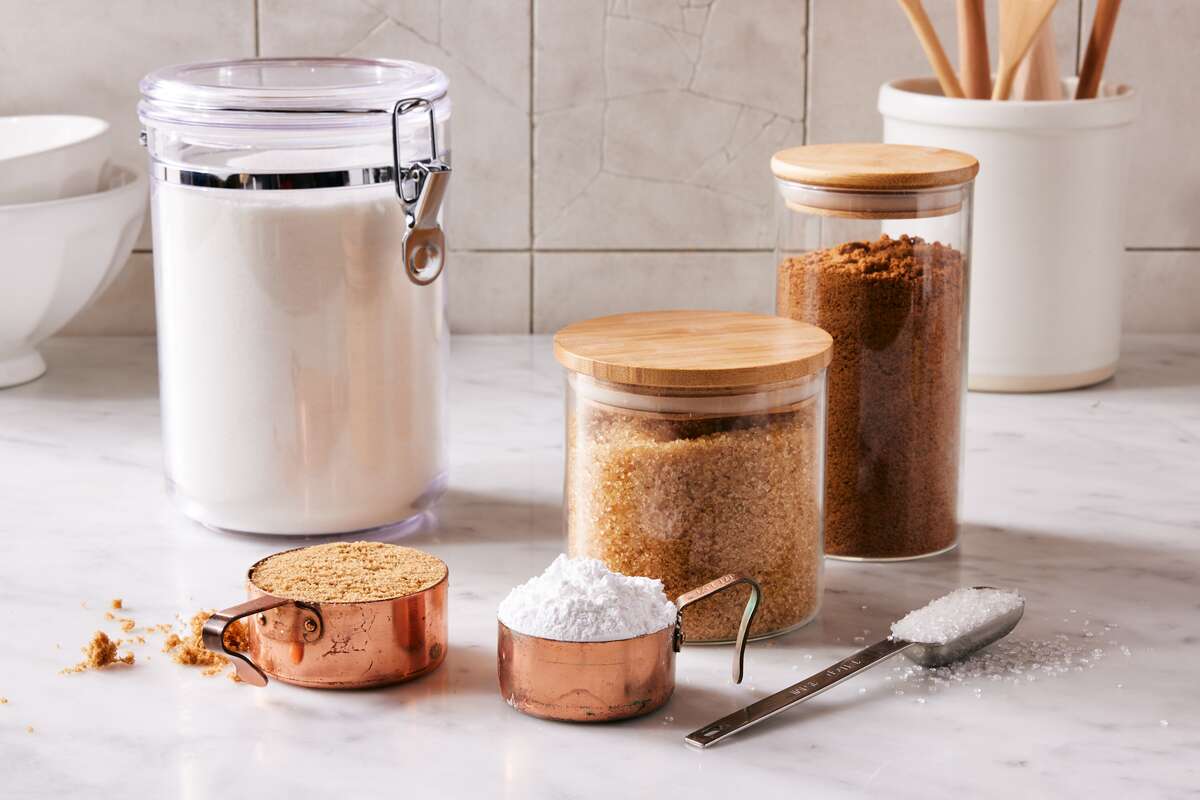
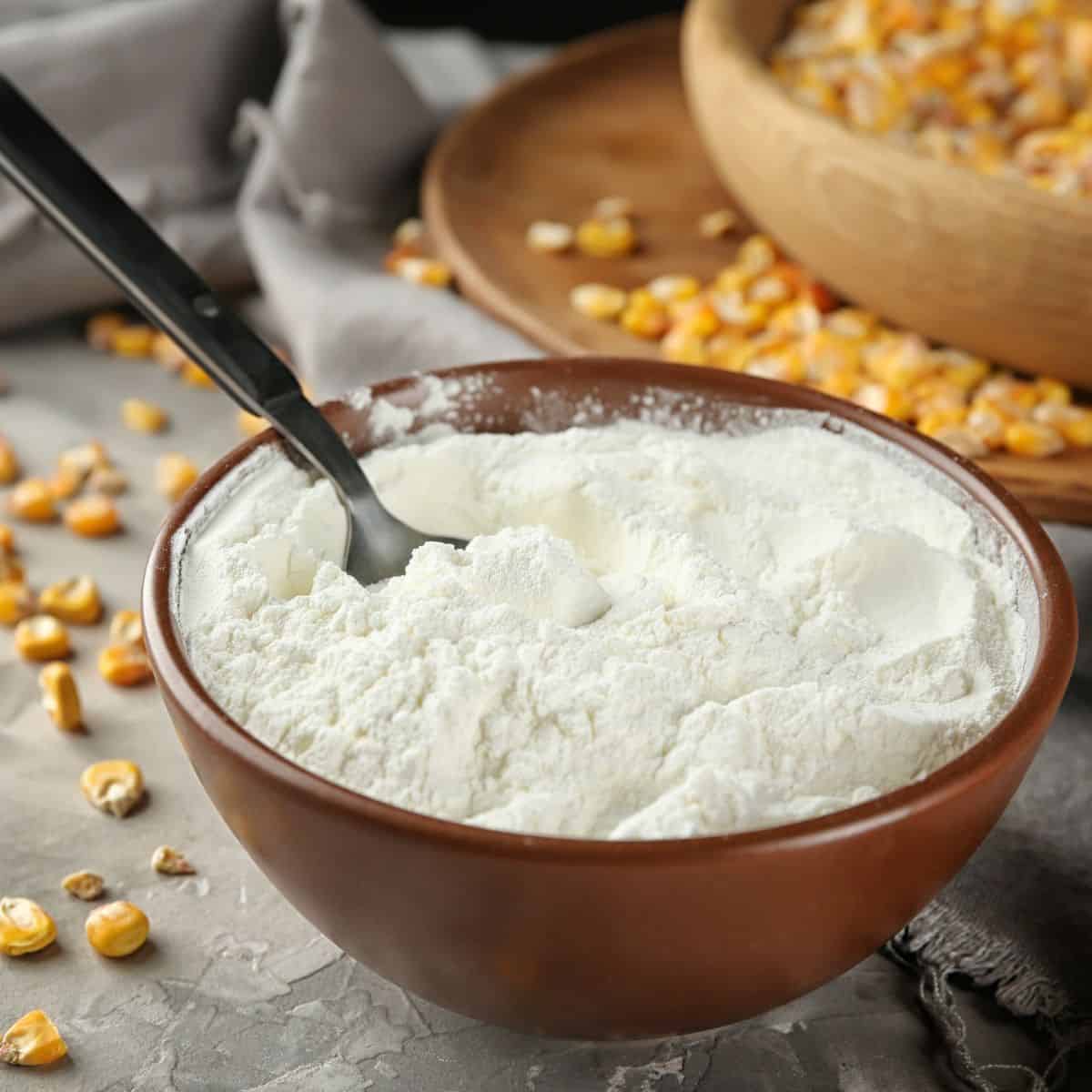
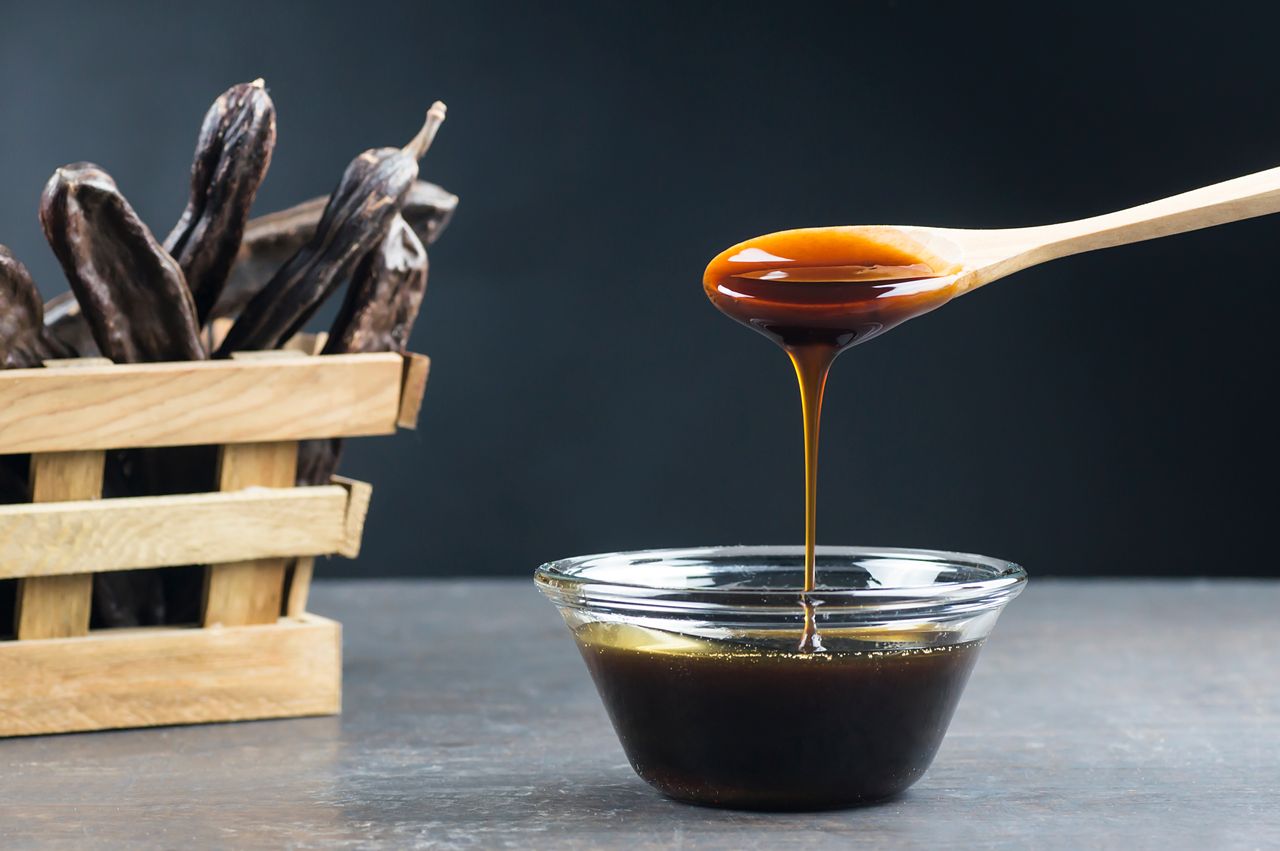
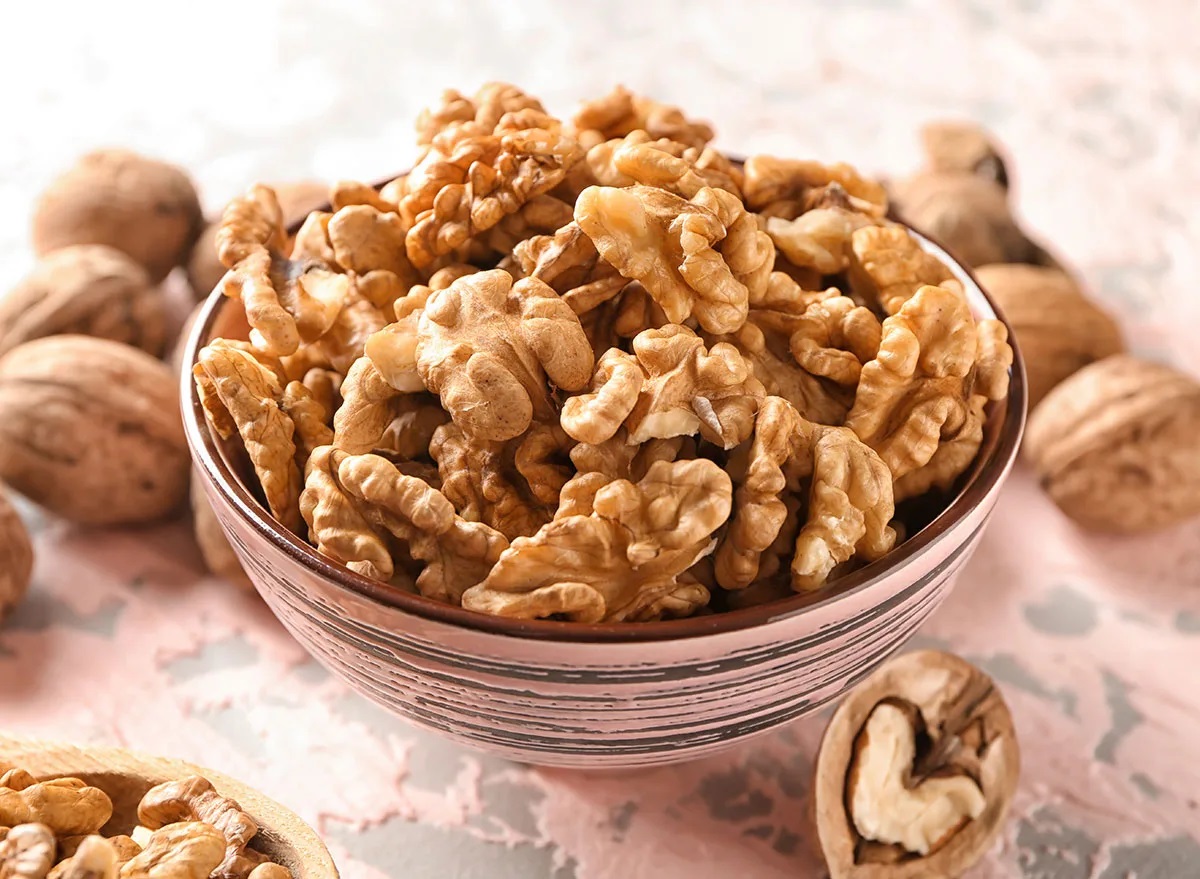
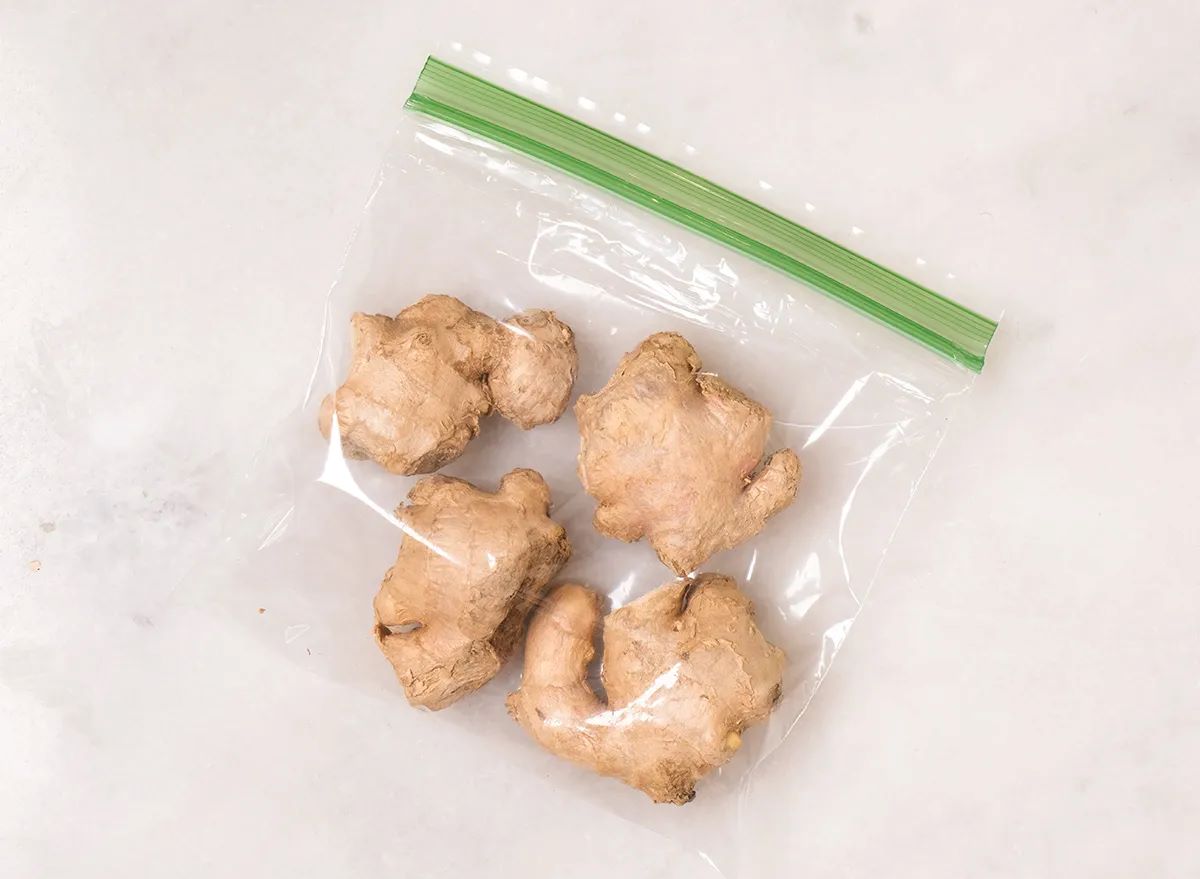
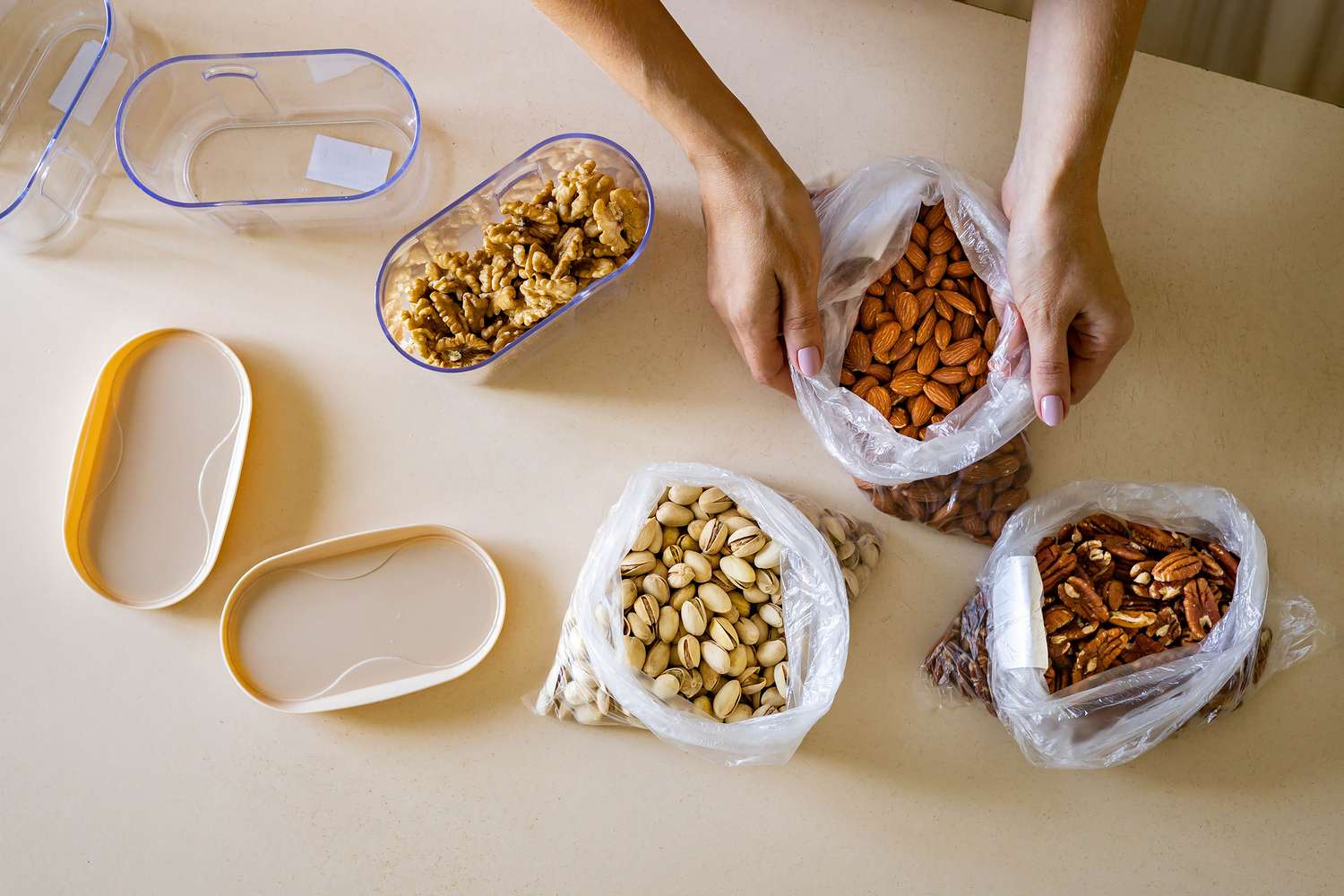
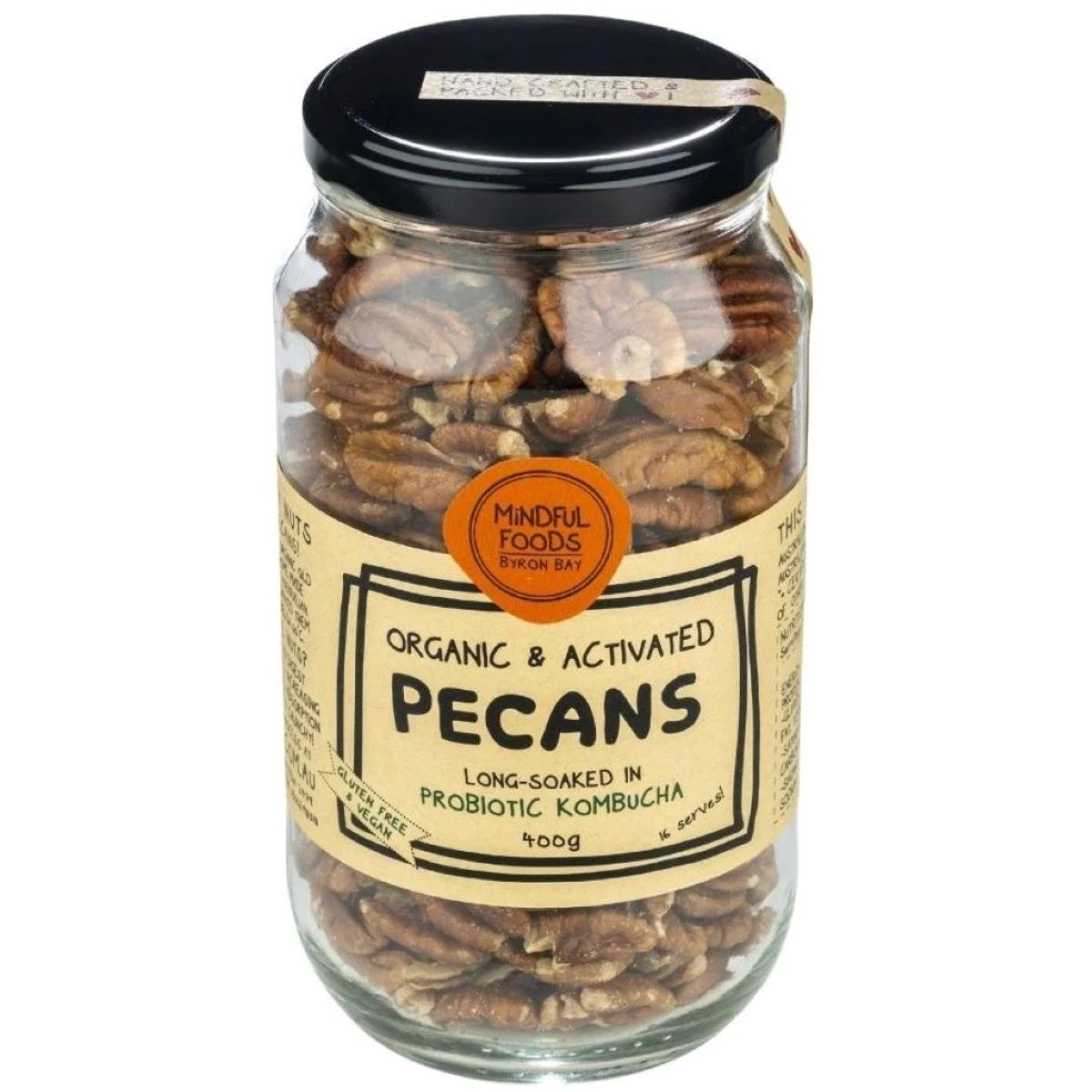


0 thoughts on “How To Store Dehydrated Food For Long Term”